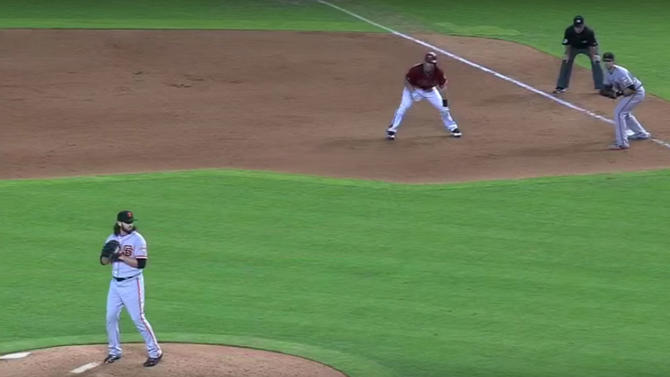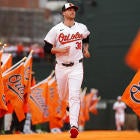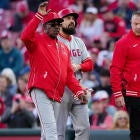The great misconception about basestealers is that they must be fast -- really fast -- in order to succeed. Diamondbacks first baseman Paul Goldschmidt is evidence to the contrary.
Though Goldschmidt entered the weekend hitting .310/.420/.541 with 72 home runs since 2014 (numbers that, by any criteria, make him one of baseball's best hitters), the statistic we're concerned with in this space often goes unnoticed -- his stolen-base total. Goldschmidt recently notched his second consecutive 20-steal effort, running his stretch to four double-digit steal seasons in five tries. Impressive? You don't know the half of it. Goldschmidt is the only first baseman to swipe 50 bags since 2014. The next closest has, oh, fewer than half as many.
| Player | Team | '14-16 SB |
| Paul Goldschmidt | ARI | 51 |
| Anthony Rizzo | CHC | 25 |
| Joey Votto | CIN | 20 |
| Logan Morrison | TB | 17 |
| Eric Hosmer | KC | 16 |
So how does Goldschmidt excel at something that few others who play his position even attempt?

Let's begin with the speed aspect. When scouts want to know how fast a player boogies, they tend to use the player's home-to-first time in max-effort situations (e.g., when there's a potential double play at stake). According to Baseball Info Solutions, Goldschmidt has averaged about 4.3 seconds from home-to-first in those spots. To put that into scouting terms, Goldschmidt is an average-ish runner -- or maybe an unwaxed eyebrow above or below, depending on how much you trust the stopwatch. In other words, he's fleeter than the typical base-clogging first baseman, but he's not beating Billy Hamilton or Ezequiel Carrera in a track meet anytime soon.
The assumption to make, then, is that Goldschmidt possesses other qualities that manifest in his base-stealing success. He does. What Goldschmidt lacks in straight-line speed, he atones for with a combination of attributes that are tougher to measure, like his reaction time, his pattern-recognition skills, his opportunism, and his boldness. Let's look at some examples of what we mean. Here's Goldschmidt stealing second and third base off Noah Syndergaard:
Big whoop, right? Everyone steals off Syndergaard. You could even ... okay, probably not. Now, let's watch Goldschmidt take second off Cory Gearrin:
Catching these things in real time is tough, so here's a screen capture of the moment when Goldschmidt makes his first move:

Notice how Gearrin had only just begun his delivery? That's a testament to Goldschmidt's capacity to get good jumps. How does he do it? By reading and reacting to the pitcher's telltale sign -- his front knee. When the front knee moves, that means the pitcher is, more often than not, going to home. (Granted, nearly all the right-handed pitchers with good pickoff moves use a balky trick called the knee pop that's effective for obvious reasons.) Goldschmidt isn't doing anything revolutionary here, he's just reading and reacting. This is similar to when Coco Crisp was at the height of his base-stealing powers. Crisp would run before the pitcher even began his delivery.
There's still more to Goldschmidt's base-stealing success than that, however. Watch enough of his stolen-base tries, and you'll notice he's good at picking his spots -- to the extent that he's able to swipe some bags without a throw. Again, that's not what you expect from a first baseman. Yet put yourself into the catcher's knee-savers. What are you supposed to do besides concede the steal when there's a speedy runner at third base, or a breaking ball en route?
| Stolen base type | Total |
| Straight steal w/ nobody on | 15 |
| Double steal (as lead) | 1 |
| Double steal (as trail) | 2 |
| With a runner ahead | 3 |
On that note, you have to give Chip Hale and the Diamondbacks credit for enabling and empowering Goldschmidt. Allowing the franchise player to swipe bases all willy-nilly is a risky strategy, and one that many teams wouldn't embrace when the player in question is built like Goldschmidt. Yet Hale and crew embrace Goldschmidt's base-stealing acumen by seemingly giving him the green light, and by batting him behind a pair of speedy base runners. Whenever Jean Segura or Michael Bourn is on base ahead of Goldschmidt, the double steal is in play.
What makes Goldschmidt special? His bat, of course. But on the basepaths, it's his ability to read pitchers and situations, his quick reactions, and his willingness to fail. Base-stealing is an art, and one that Goldschmidt has mastered, even if he doesn't look like the other masters.






















